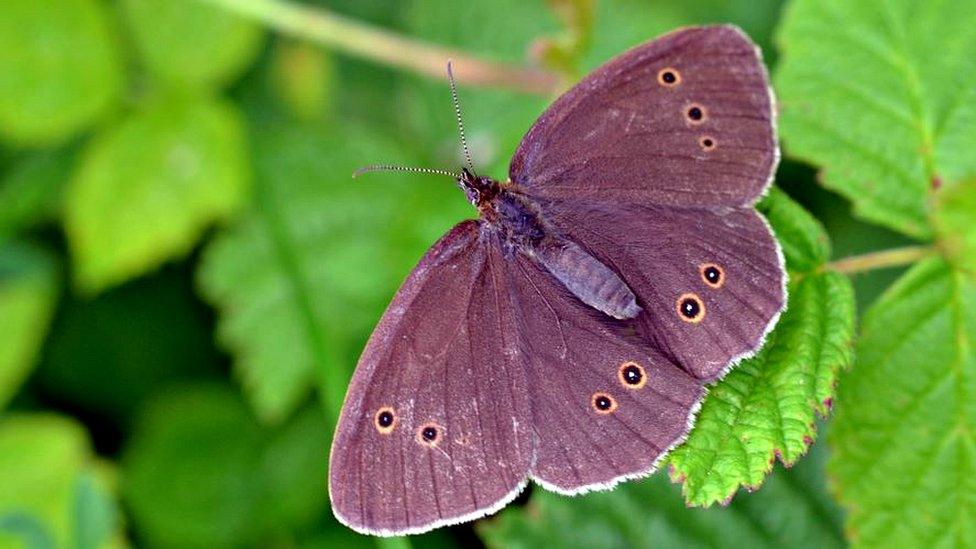Butterfly count to gauge impact of extreme weather
- Published

Scientists are asking Scots to count butterflies this summer to understand what extreme weather is doing to them.
Researchers are trying to work out what impact climate change is having on the insects.
Last year's record temperatures, heatwaves and droughts are believed to have caused some of the plants that caterpillars feed on to die.
Now Butterfly Conservation wants people to spend 15 minutes in any sunny spot and record what they see.
During last year's Big Butterfly Count, people across Scotland carried out 3,633 sessions, spotting 24,111 butterflies and day-flying moths.
The most commonly spotted species included the meadow brown, the small white and the ringlet.
Scientists now need to work out how these and other species are faring this year and are relying on the public to help them again this summer.
'Heavy toll'
Dr Zoe Randle, senior surveys officer at Butterfly Conservation, said: "This is a vital year for the Big Butterfly Count.
"We know that the previous extreme summer droughts in 1976 and 1995 took a heavy toll on butterflies and numbers crashed the following year, taking almost a decade to recover.
"The data collected in Scotland during this year's Big Butterfly Count will give us a valuable insight into what the effect of the most recent extreme weather has been, and how we might be able to better protect our beautiful butterflies.
"With climate change here to stay, we need people in Scotland to take part more than ever before."
Last year, almost 100,000 counts took place across the UK, with participants spending a combined 2.5 years counting butterflies in their gardens, local parks and in the countryside.
Dr Zoe Randle said it was a vital year for the Big Butterfly Count
Dr Randle added: "We know 80% of butterflies in the UK have declined since the 1970s, which means there are fewer butterflies to be seen than in years gone by.
"However, even if you don't see any butterflies during your count, we still want you to tell us.
"We need to know where there aren't any butterflies just as much as where there are, so please still log your result and then pick another day or location and try again. There are no limits on how many times you can take part."
This year's runs from Friday 14 July to Sunday 6 August.